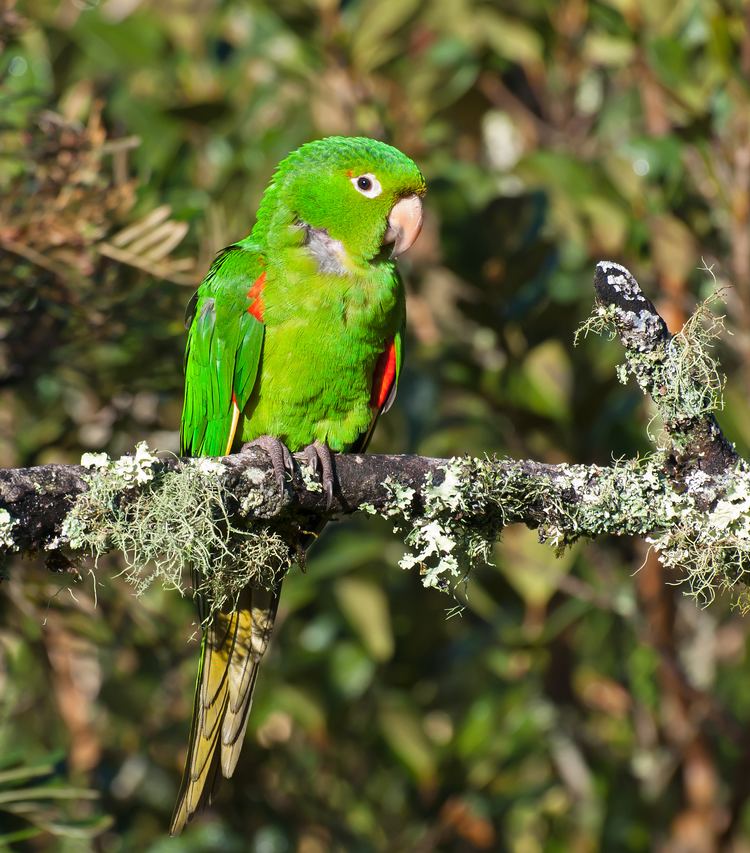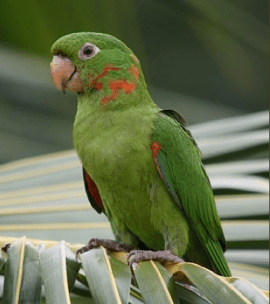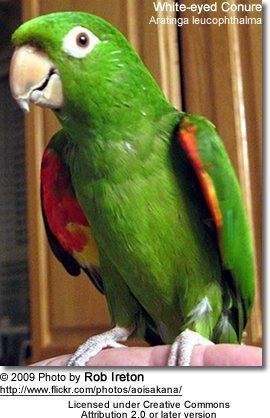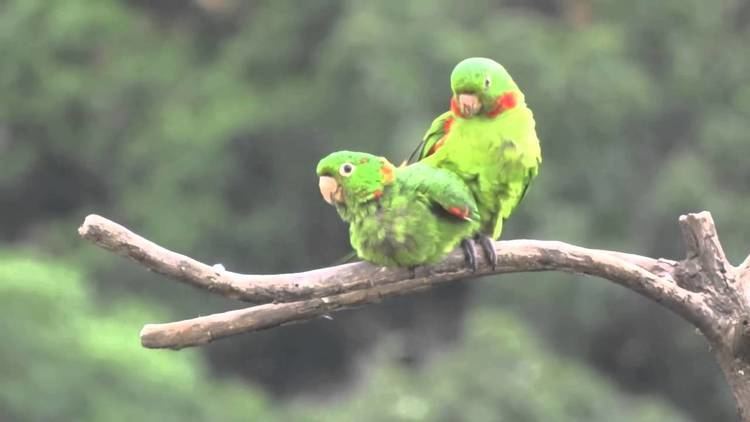Order Psittaciformes Rank Species | Phylum Chordata Superfamily Psittacoidea Subfamily Arinae Higher classification Aratinga | |
 | ||
Similar Bird, Aratinga, Parrot, Psittacara, Peach‑fronted parakeet | ||
Parakeet white eyed parakeet wild birds
The white-eyed parakeet or white-eyed conure (Psittacara leucophthalmus) is a small green Neotropical parrot native to South America.
Contents
- Parakeet white eyed parakeet wild birds
- Couple parrots white eyed parakeet birds vocalization
- Taxonomy
- Description
- Distribution and habitat
- Conservation status
- Aviculture
- References
Couple parrots white eyed parakeet birds vocalization
Taxonomy

First described by German zoologist Philipp Ludwig Statius Müller in 1776, its specific epithet is derived from the Ancient Greek leukos "white" and ophthalmos "eye".
Dickinson (2003) recognised three subspecies: Aratinga leucophthalma nicefori, A. l. callogenys and A. l. leucophthalma.
Description

The white-eyed parakeet measures 30–34 cm (12–13 in) in length and 37–40 cm (15–16 in) in wingspan, with a body mass of 100–218 g (3.5–7.7 oz). is an overall green bird with red on the shoulders and some random flecks of red on the head and neck. The underwing primary coverts are red tipped yellow. A prominent white eye ring gives this species its name. In addition to the nominate, there are two very similar subspecies, callogenys and nicefori, although the validity of the latter, based on a single specimen, is questionable. Juveniles have little or no red and yellow in their plumage.
Distribution and habitat

White-eyed parakeets are found over much of northern South America, from eastern Venezuela, Colombia and the Guianas in the north across Brazil to northern Argentina and Uruguay in forests, woodland, savanna and mangroves. Adapts readily to degraded and urban areas, provided there are sources of food and nesting places (under roofs and other cavities) and occurs in several cities.
Conservation status

The species is listed under CITES Appendix II. It is category least concern on IUCN Redlist. According to the IUCN, this bird has been heavily trafficked since 1981.
Aviculture

Though not as popular as some of the more colorful parakeets, the white-eyed parakeet can become a sweet, loving and talkative pet. They are seldom destructive and are generally not screamers, often choosing to mimic speech instead. Although many breeders ignore this species, those that do breed them appreciate their good parenting skills. Breeding requirements for white-eyed parakeets are much the same as for other parakeet species.

They will usually start to go to nest in March or April, sometimes breeding throughout the year and having four to six clutches. The clutch size is usually four eggs. Chicks will sometimes start to talk by the time they are weaned and generally will talk by six months of age.
White-eyed parakeets are sometimes confused with Finsch's parakeets because both have the red and yellow epaulets under their wings. The white-eyed parakeets lack the red triangle on the forehead as adults. In captivity they can live for nearly 28 years.
